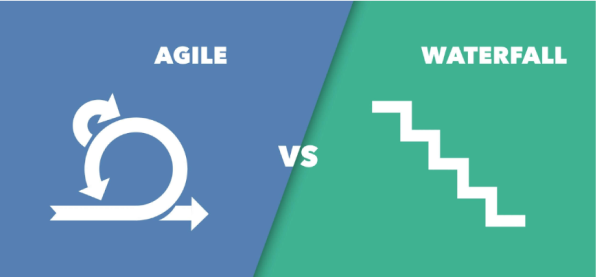Project management has evolved over time, with different methodologies emerging to suit various industries and project needs. Two of the most popular methods are Agile and Waterfall. Both have distinct processes, advantages, and challenges. Understanding when to use each method can be crucial to the success of a project. In this article, we will dive into a detailed comparison of Agile vs Waterfall, and discuss how to determine the best fit for your projects.

1. Overview of Agile and Waterfall
- Agile: Agile is a flexible and iterative approach to project management. It breaks down projects into smaller, manageable iterations or “sprints.” Teams collaborate closely, allowing them to adapt to changes quickly and continuously improve their product. Agile is popular in software development, where requirements can evolve over time.
- Waterfall: Waterfall is a linear, structured methodology. It follows a sequential process, where each phase (such as design, development, and testing) must be completed before moving on to the next. This method is rigid, with clearly defined requirements and milestones from the start. Waterfall is often used in industries like construction, where changes mid-project can be costly or impractical.
2. Key Differences
| Aspect | Agile | Waterfall |
|---|---|---|
| Flexibility | Highly flexible and adaptive. | Rigid and linear, with minimal flexibility. |
| Project Phases | Iterative development in short sprints. | Sequential phases, each must be completed fully before moving to the next. |
| Client Involvement | Continuous feedback and collaboration. | Limited client involvement until project milestones are delivered. |
| Documentation | Less emphasis on upfront documentation; focus on evolving the product. | Comprehensive documentation at the beginning, guiding the entire project. |
| Risk Management | Early identification of risks due to frequent testing and reviews. | Risks may emerge later in the project, possibly leading to costly changes. |
| Delivery | Incremental deliveries after each sprint. | One final delivery at the end of the project. |
| Team Collaboration | Requires close team collaboration and communication. | Teams work independently during each phase. |
3. Advantages of Agile
- Adaptability: Agile allows teams to respond quickly to changes in project scope or requirements. It’s perfect for projects where outcomes are not fully known at the start.
- Client Collaboration: Continuous interaction with the client ensures the final product meets evolving needs and expectations.
- Frequent Testing: With regular testing during each sprint, issues are identified and addressed early, reducing overall risk.
- Faster Delivery: Agile enables incremental delivery of features, allowing clients to receive and use parts of the product before the entire project is complete.
4. Advantages of Waterfall
- Clarity and Structure: Waterfall’s structured process is ideal for projects with well-defined requirements, ensuring everyone understands their role and timeline.
- Strong Documentation: With clear documentation at the outset, there is less ambiguity, making it easier to onboard new team members or manage large, complex projects.
- Predictable Timelines: Since each phase is planned in detail, stakeholders have a clear understanding of the timeline and delivery date.
- Suited for Fixed-Scope Projects: Waterfall is ideal for projects with limited scope for change, such as construction or manufacturing.
5. When to Use Agile
- Uncertain or Evolving Requirements: Agile is ideal for projects where the final product is not clearly defined from the beginning, such as software development. It allows teams to iterate based on feedback and new information.
- Need for Speed and Flexibility: If your project needs to move quickly and adapt to market or client demands, Agile is the best choice.
- Close Collaboration with Stakeholders: When clients need to be actively involved in the process, Agile provides a framework for ongoing communication and feedback.
6. When to Use Waterfall
- Fixed Requirements: Waterfall works best for projects with clear, well-defined goals and deliverables from the outset. Examples include government contracts, hardware projects, or building construction.
- Limited Stakeholder Involvement: In projects where stakeholder involvement is minimal during the development phase, Waterfall’s linear process ensures all decisions are made up front.
- Long-Term Planning: Waterfall is a better choice for projects where a comprehensive long-term plan is required and scope changes are expensive or impossible to implement.
7. Hybrid Approach: Combining Agile and Waterfall
In some cases, a hybrid approach that combines the strengths of both Agile and Waterfall can be the best solution. For instance, a project might start with a Waterfall-style planning phase to set clear goals and requirements, followed by Agile development for flexibility during execution. This method can be particularly useful in industries transitioning from traditional to modern, iterative project management practices.
8. Conclusion
Both Agile and Waterfall offer unique strengths and weaknesses. Choosing the right methodology depends on your project’s scope, client needs, timeline, and the level of flexibility required.
- Choose Agile if you need adaptability, client collaboration, and rapid delivery.
- Choose Waterfall if you need predictability, structure, and well-defined requirements.
In some cases, a combination of both might provide the best results. Understanding the specific needs of your project and team will help you make the right decision.
You can find more articles about the project management process at here!
